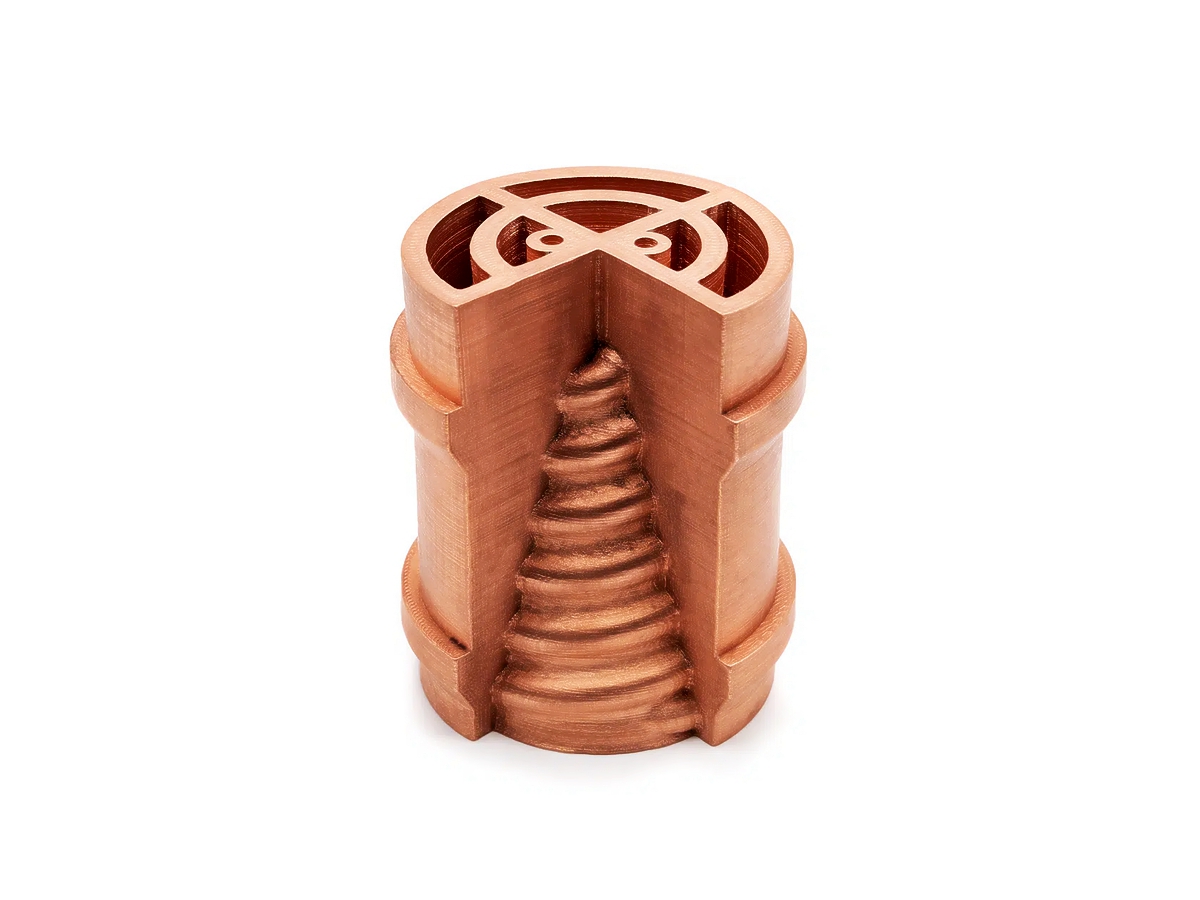Advancing Scientific Discovery: Copper 3D Printed Laboratory Components for Education and Research
Introduction
Copper 3D printing is revolutionizing laboratory equipment manufacturing by delivering high-precision, high-conductivity components for scientific education and research applications. Utilizing advanced metal 3D printing technologies like Selective Laser Melting (SLM) and Direct Metal Laser Sintering (DMLS), high-purity copper alloys such as Copper C101 and GRCop-42 offer exceptional thermal and electrical conductivity, ideal for custom-designed research instruments and experimental setups.
Compared to conventional manufacturing, copper 3D printing for laboratory components enables rapid customization, complex thermal management designs, reduced assembly steps, and high-quality results for scientific innovation.
Applicable Material Matrix
Material | Electrical Conductivity (% IACS) | Thermal Conductivity (W/m·K) | Tensile Strength (MPa) | Purity (%) | Lab Application Suitability |
|---|---|---|---|---|---|
≥99 | 390–400 | 220 | 99.99% | High-conductivity components | |
≥97 | 380–390 | 210 | 99.90% | General laboratory fittings | |
~80 | 275–300 | 350 | Alloyed | Thermal management systems | |
75–80 | 300–320 | 450 | Alloyed | High-strength heat exchangers | |
≥99.95 | 390–400 | 200 | 99.95% | Experimental electromagnetic devices | |
25–30 | 200–220 | 600 | Alloyed | Corrosion-resistant lab equipment |
Material Selection Guide
Copper C101: Offering the highest electrical (≥99% IACS) and thermal conductivity (~400 W/m·K), C101 is ideal for high-performance electrodes, RF cavities, and precision thermal testing instruments.
Copper C110: With excellent conductivity and lower cost, C110 is well-suited for general laboratory tubing, connectors, and experimental thermal plates.
GRCop-42: Designed for high-temperature environments, GRCop-42 provides superior creep resistance and mechanical stability for custom cooling systems and scientific vacuum components.
CuCr1Zr: Combining good thermal conductivity and high mechanical strength (~450 MPa tensile), CuCr1Zr is used for heat exchangers, thermal blocks, and robust cooling jackets.
Pure Copper: Ultra-high purity copper is ideal for electromagnetic experiments, superconducting studies, and experimental apparatus requiring minimal contamination and maximum conductivity.
CuNi2SiCr: Alloyed for improved mechanical strength and corrosion resistance, it is suited for chemical laboratory environments requiring stable performance under corrosive exposure.
Process Performance Matrix
Attribute | Copper 3D Printing Performance |
|---|---|
Dimensional Accuracy | ±0.05 mm |
Density | >99.5% Theoretical Density |
Layer Thickness | 30–60 μm |
Surface Roughness (As-Printed) | Ra 5–12 μm |
Minimum Feature Size | 0.3–0.5 mm |
Process Selection Guide
High-Precision Thermal Components: 3D printed copper structures enable the direct creation of complex cooling channels, thermal exchange fins, and intricate heat spreaders within compact devices.
Superior Electrical Conductivity: Printing with pure copper materials ensures minimal resistive loss, critical for electromagnetic shielding, induction systems, and RF equipment in labs.
Complex Geometries: Enables the production of complex internal geometries that are impossible with conventional subtractive manufacturing, reducing assembly complexity.
Rapid Prototyping and Experimentation: Fast design iteration allows researchers and educators to test and refine experimental setups quickly.
Case In-Depth Analysis: C101 3D Printed Custom RF Cavity for Particle Accelerator Research
A university research team required a custom-shaped, high-conductivity RF cavity for experimental use in a compact particle accelerator project. Using our copper 3D printing service with Copper C101, we produced cavities achieving electrical conductivity ≥99% IACS, dimensional tolerance within ±0.05 mm, and ultra-smooth internal surfaces after electropolishing. The precision structure improved RF efficiency by 20%, reducing operational losses and enhancing experimental accuracy.
Industry Applications
Scientific Research and Education
Custom RF and microwave components.
Heat exchangers for lab-scale thermal management systems.
Electromagnetic shielding parts for experimental setups.
Medical Research
Cryogenic system components.
Custom probes for imaging and diagnostics equipment.
Semiconductor and Energy Labs
Cooling systems for semiconductor fabrication.
Custom test rigs and experimental cooling structures.
Mainstream 3D Printing Technology Types for Copper Laboratory Components
Selective Laser Melting (SLM): Best for high-purity copper components with excellent density and conductivity.
Direct Metal Laser Sintering (DMLS): Ideal for intricate thermal management designs and small batch production.
Binder Jetting: Suitable for larger, lower-cost production runs of moderate-conductivity copper components.
FAQs
What types of copper alloys are best for 3D printed laboratory components?
How does copper 3D printing enhance scientific experimentation and research?
What are the conductivity advantages of 3D printed copper for laboratory use?
What surface treatments optimize performance for 3D printed copper components?
Can 3D printed copper components handle cryogenic and high-temperature research applications?

